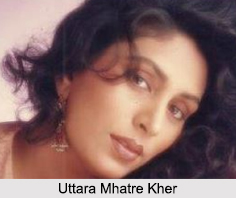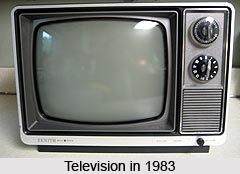 History of Indian Television lays bare the journey of television and the assorted highs and lows. The prestigious history of Indian television has envisioned the progress, expansion and growth of audio visual media in the nation.
History of Indian Television lays bare the journey of television and the assorted highs and lows. The prestigious history of Indian television has envisioned the progress, expansion and growth of audio visual media in the nation.
During the 1980s Indian small screen programming began and at that time there was only one national channel Doordarshan, which was government owned. The Ramayana and Mahabharata were the first major television series produced. This serial reached the zenith of the world record viewer ship numbers for a single program. By the late 1980s more and more people started to buy television sets.
Television in India has been in existence for about four decades. For the first 17 years, it spread haltingly and transmission was usually in black and white. The thinkers and policy makers of the country, which had just been liberated from centuries of colonial rule, though television to be a luxurious element that Indians could do without. In 1955 a Cabinet decision was taken disallowing any foreign investments in print media which has since been followed religiously for nearly 45 years. Sales of TV sets, as reflected by licences issued to buyers were just 676,615 until 1977.
The rapid expansion of television hardware in India increased the demand for developing more program software to fill the broadcast hours. Program production, previously a monopoly of Doordarshan, the government-run national television system in India, was then opened to the group of aspiring artists, producers, directors, and technicians. Most of the talented individuals got connected with the television industry.
Highly popular television soap operas began with Hum Log in 1984-85, evoked a programming revolution at Doordarshan. The main lesson learned from this experience was that an indigenous television program could attract and build a large loyal audience over the duration of the serial, generating big profits. The advertising carried by Hum Log promoted a new consumer product in India, Maggi 2-Minute Noodles. The public rapidly accepted this new consumer product, suggesting the power of television commercials.
Hum Log, one of the most popular Hindi serials, was quickly followed by Buniyaad, a historical soap opera about the partition of British India into India and Pakistan in 1947. In 1987, Ramayana, a Hindu religious epic, attracted smash ratings, to be then eclipsed by the phenomenally successful Mahabharata in 1988-89. In the 1990s, serials were in large numbers on Doordarshan. Huge hits included historical serials such as The Sword of Tipu Sultan and The Great Maratha, religious serials such as Jai Hanuman, Shri Krishna, and Om Namah Shivay, fantasy serials like Shaktimaan, and family serials like Shanti, Hum Raahi, and Udaan. These popular television programs attracted large audiences, and generated vast advertising earnings for the Indian government through Doordarshan. Advertisers quickly understood the advantages of advertising their products on a medium that reached a huge national audience.
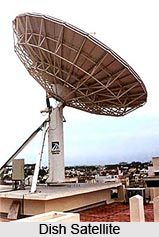 Television has come to the forefront only in the past 21 years and more so in the past 13. There were initially two ignition points in the history of Indian Television. The first in the eighties when colour TV was introduced by state-owned broadcaster Doordarshan (DD) timed with the 1982 Asian Games which India hosted. It then proceeded to install transmitters nationwide rapidly for terrestrial broadcasting. In this period no private enterprise was allowed to set up TV stations or to spread TV signals.
Television has come to the forefront only in the past 21 years and more so in the past 13. There were initially two ignition points in the history of Indian Television. The first in the eighties when colour TV was introduced by state-owned broadcaster Doordarshan (DD) timed with the 1982 Asian Games which India hosted. It then proceeded to install transmitters nationwide rapidly for terrestrial broadcasting. In this period no private enterprise was allowed to set up TV stations or to spread TV signals.
The second turning point in the history of Indian television came in the early nineties with the broadcast of satellite TV by foreign programmers like CNN followed by Star TV and a little later by domestic channels such as Zee TV and Sun TV into Indian homes. Before this, Indian viewers had to make do with DD`s regulated fare which was non-commercial in nature and directed towards only education and socio-economic development. Entertainment programmes were few and far between. And when the solitary few soaps like Hum Log (1984), and mythological dramas like Ramayana (1987-88) and Mahabharata (1988-89) were televised, millions of viewers stayed glued to their sets. When, urban Indians learnt that it was possible to watch the international affairs on television, they gradually bought dishes for their homes. Others turned entrepreneurs and started offering the signal to their neighbours by connecting cable over treetops and verandahs. From the large metros satellite TV delivered through cable moved into smaller towns, spurring the purchase of TV sets and even the upgradation from black and white to colour televisions. Doordarshan responded to this satellite TV invasion by launching an entertainment and commercially driven channel and introduced entertainment programming on its terrestrial network. This again fuelled the purchase of sets in the remote regions where cable TV was not available.
In the mid-1960s, Dr Vikram Sarabhai, a farsighted technocrat and founder of India`s space program, began arguing in policy-making circles that a nationwide satellite television system could play a major role in promoting economic and social development. At Sarabhai`s initiative, a national satellite communication group (NASCOM) was established in 1968. Based on its recommendations, the Indian government permitted the concept of "hybrid" television broadcasting system consisting of communication satellites as well as ground-based microwave relay transmitters. Sarabhai envisioned that the satellite component would allow India to leap multiple steps into the state-of-the-art communication technology, speed up the development process, and take advantage of the lack of infrastructure (until 1972, there was only one television transmitter in India, located in Delhi).
Eventually, satellite television was introduced in India after surveying the constant popularity of Indian television. Satellite broadcasting fits naturally with India`s immense size, and with the ability of satellites to overcome natural barriers to television signals like mountains. A satellite in this geo-stationary orbit is believed to be a perfect platform for television broadcasting. The footprint of the television signal would cover almost one-third of the earth`s surface. Essentially, satellite communication removes the cost of distance in transmitting television (or telephone) messages. The initial success of the channels had a snowball effect. More foreign programmers and Indian entrepreneurs flagged off their own versions. From two channels before 1991, Indian viewers were exposed to more than 50 channels by 1996. Software producers came up to cater to the programming boom almost overnight. Some talent came from the film industry, some evolved advertising and some also from the field of journalism.
More and more people set up television cable networks until there was a time in 1995-96 when an estimated 60,000 cable operators existed in the country. Some of them had subscriber bases as low as 50 to as high as in the thousands. Most of the networks could relay just 6 to 14 channels as higher channel relaying capacity demanded heavy investments, which cable operators were unable to make. The multi-system operators (MSOs) started buying up local networks or franchising cable TV feeds to the smaller operators for a typical fee. This phenomenon led to resistance from smaller cable operators who joined forces and started functioning as MSOs. The net outcome was that the number of cable operators in the country fell to 30,000. 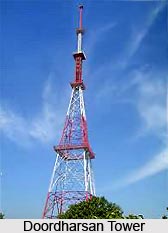 The rash of players who rushed to set up satellite channels discovered that advertising revenue was not large enough to support them. Gradually, at least half a dozen either folded up or aborted the high-flying plans they had drawn up, and started operating in a restricted manner. Some of them also converted their channels into basic subscription services charging cable operators a specific carriage fee.
The rash of players who rushed to set up satellite channels discovered that advertising revenue was not large enough to support them. Gradually, at least half a dozen either folded up or aborted the high-flying plans they had drawn up, and started operating in a restricted manner. Some of them also converted their channels into basic subscription services charging cable operators a specific carriage fee.
The first private network to capitalize on the opportunity provided by direct broadcast satellite (DBS) was STAR-TV, headquartered in Hong Kong. "STAR" stands for Satellite Television for the Asian Region. The network, originally owned by the Hutch Vision Group of Hong Kong, was founded in 1991, and then acquired for $871 million by Rupert Murdoch`s gigantic News Corporation in 1995. While STAR-TV was the catalyst for direct satellite broadcasting into India, its path was rapidly followed by Indian-owned private networks like Zee-TV, and by foreign-owned broadcasters like Sony. By the late 1990s, more than 40 private television channels were available to Indian audiences. It was estimated that by 2000 India would have the world`s largest cable and satellite markets with cable connectivity to 35 million homes, comprising some 150 million cable viewers.
The government started taxing cable operators in a proposal to generate revenue. The rates varied in the 26 states that go to form India and ranged from 35 per cent upwards. The authorities moved in to regulate the business and the Cable TV Act, which was passed in 1995. The Supreme Court passed a judgment that the air waves are not the property of the Indian government and any Indian citizen wanting to use them should be permitted to do so.
The government made efforts to get some regulation in place by setting up committees to propose what the broadcasting law of India should be, as the sector was still being governed by laws which were passed in 19th century India. A broadcasting bill was drawn up in 1997 and that was introduced in parliament. But it was not passed into an Act. State-owned telecaster Doordarshan and radio caster All India Radio were brought under a combined company called the Prasar Bharati under an act that had been gathering dust for seven years, the Prasar Bharati Act, 1990. The Act served to give autonomy to the broadcasters as their management was left to a supervisory board consisting of retired professionals and bureaucrats.
A committee headed by a senior Congress (I) politician Sharad Pawar and few other politicians and industrialist was set up to analyze the contents of the Broadcasting Bill. It held discussions with industry, politicians, and consumers and a report was even drawn up. But the United Front government fell and since then the report and the Bill was not brought under consideration. But before that it issued a ban on the sale of Ku-band dishes and on digital direct-to-home Ku-band broadcasting, which the Rupert Murdoch-owned News Television was threatening to start in India.
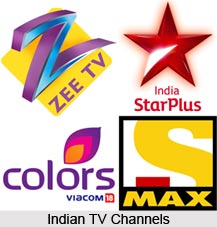 In 1999, a BJP-led government has been threatening to once again allow DTH Ku-band broadcasting and it has been talking of dismantling the Prasar Bharati and once again reverting Doordarshan`s and All India Radio`s control back in the government`s hands.
In 1999, a BJP-led government has been threatening to once again allow DTH Ku-band broadcasting and it has been talking of dismantling the Prasar Bharati and once again reverting Doordarshan`s and All India Radio`s control back in the government`s hands.
The year 2000 will be remembered for a single show in the history of Indian television. The Indian television industry went on to switch the fortunes of some promising media companies. Kaun Banega Crorepati, the Amitabh Bachchan hosted game show based on Who Wants to be a Millionaire, not only became the most-watched programme on private satellite television but also catapulted Star Plus into an incredible popular position. On the foundation of the success of Star Plus, Rupert Murdoch built his media empire. If Subhash Chandra had tasted success all through these years since Zee launched, 2000 was a turning point in Zee TV`s history as well.
In recent times, Indian television is said to be in close amalgamation with the private channels that offers all kinds of entertainment and educational shows in a perfect dazzling presentation. The Indian television or the small screen has achieved strata of indispensability. Life without the audio visual media is imagined to be a standstill one. The glamour packed soaps and serials, reality shows, talk shows and other entertainment packages encompass a major section of Indian lifestyle.



